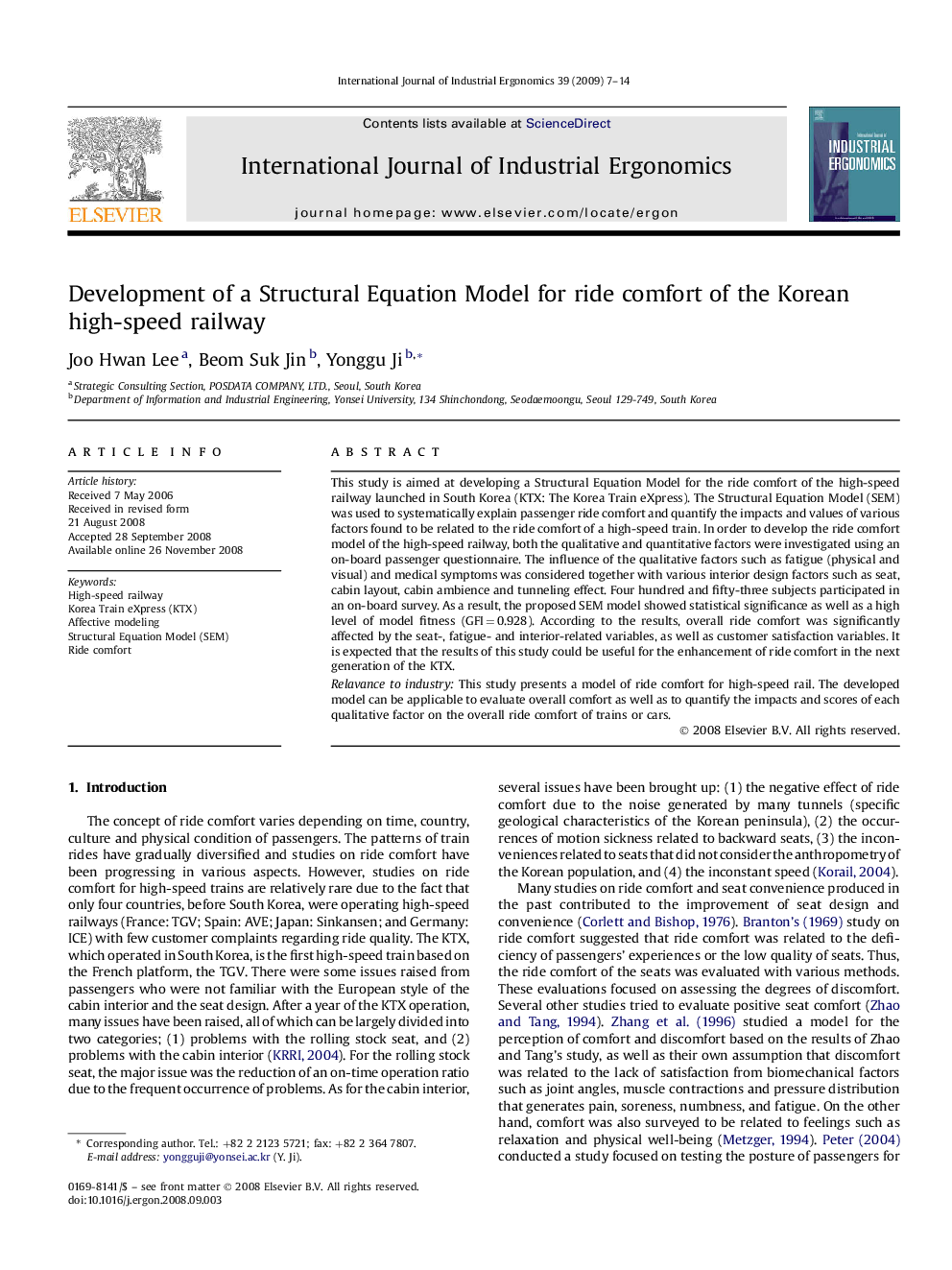| کد مقاله | کد نشریه | سال انتشار | مقاله انگلیسی | نسخه تمام متن |
|---|---|---|---|---|
| 1096245 | 1487466 | 2009 | 8 صفحه PDF | دانلود رایگان |

This study is aimed at developing a Structural Equation Model for the ride comfort of the high-speed railway launched in South Korea (KTX: The Korea Train eXpress). The Structural Equation Model (SEM) was used to systematically explain passenger ride comfort and quantify the impacts and values of various factors found to be related to the ride comfort of a high-speed train. In order to develop the ride comfort model of the high-speed railway, both the qualitative and quantitative factors were investigated using an on-board passenger questionnaire. The influence of the qualitative factors such as fatigue (physical and visual) and medical symptoms was considered together with various interior design factors such as seat, cabin layout, cabin ambience and tunneling effect. Four hundred and fifty-three subjects participated in an on-board survey. As a result, the proposed SEM model showed statistical significance as well as a high level of model fitness (GFI = 0.928). According to the results, overall ride comfort was significantly affected by the seat-, fatigue- and interior-related variables, as well as customer satisfaction variables. It is expected that the results of this study could be useful for the enhancement of ride comfort in the next generation of the KTX.Relavance to industryThis study presents a model of ride comfort for high-speed rail. The developed model can be applicable to evaluate overall comfort as well as to quantify the impacts and scores of each qualitative factor on the overall ride comfort of trains or cars.
Journal: International Journal of Industrial Ergonomics - Volume 39, Issue 1, January 2009, Pages 7–14